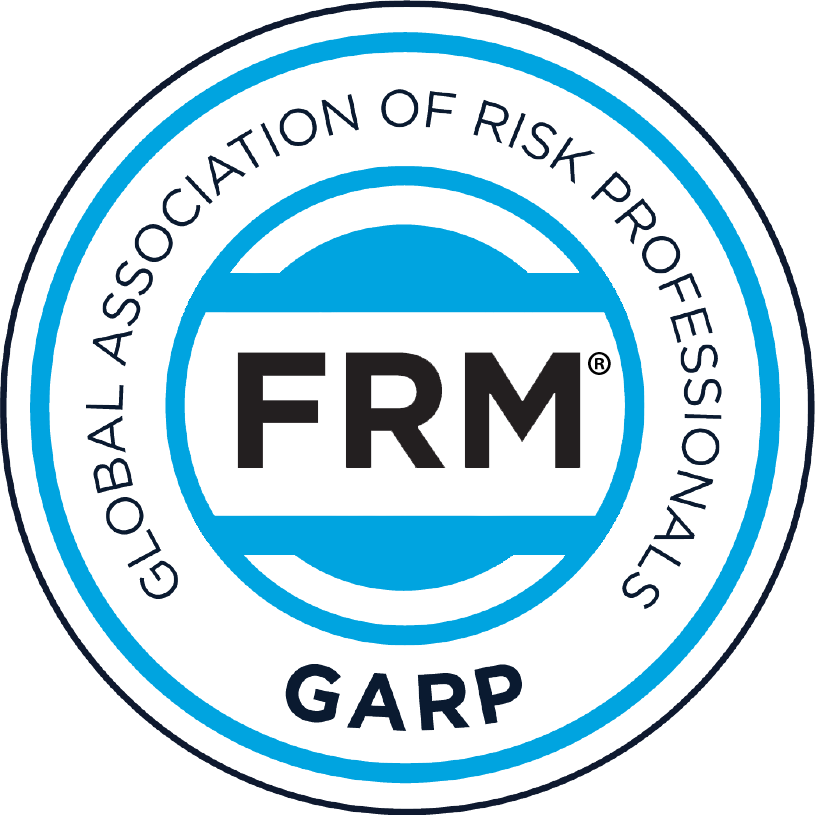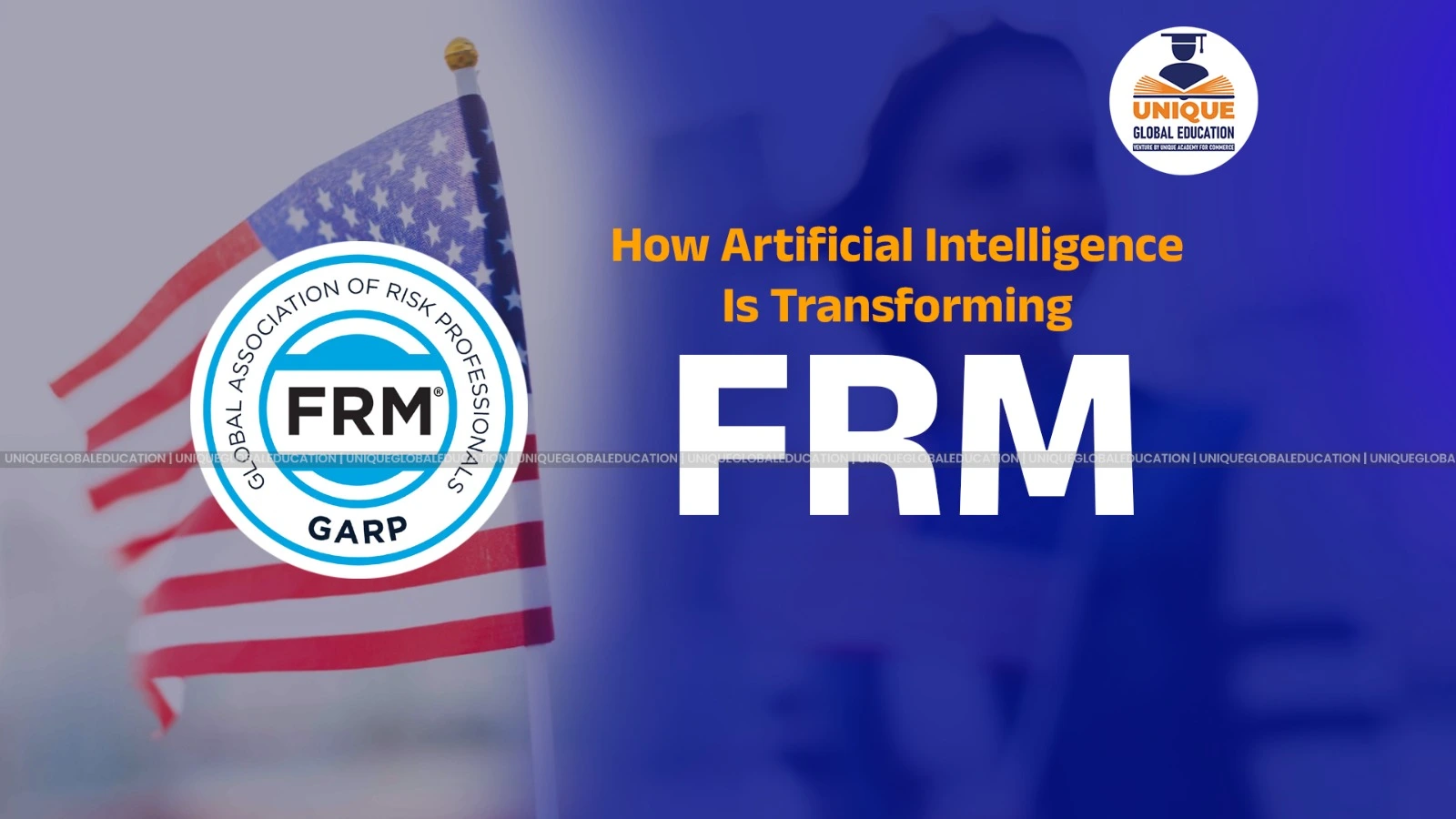The world is seeing an AI revolution – it has made its mark on almost all industries, financial risk management is no different. Algorithms made able via AI are assisting in making faster, more accurate decisions, whilst providing a data-driven approach from credit scoring to algorithmic trading and fraud detection. But while the opportunity of AI in FRM is immense, the process of embedding AI within legacy risk management is fraught with difficulty.
In this blog, I’m going to discuss the potential and the stumbling blocks to implementing AI into FRM, and explain the reason why this knowledge matters for current and aspiring risk managers, as well as for the representative financial institutions, and for those hoping to get FRM certified.
Table of Contents
Why AI Matters in Financial Risk Management
Financial risk management is the practice of identifying, measuring, and treating credit risk, market risk, and operational risk a firm faces during its transactions in the marketplace. In the past, risk managers had to turn to historical data, statistical models and human expertise.

Traditional models are no longer enough to model financial markets in the era of big data and markets complexity. That’s where AI steps in.
AI brings capabilities such as:
- Real time processing of huge data sets.
- Predictive modelling that would anticipate or risk before it occurs.
- Anomaly and fraud detection using pattern matching.
- Automation to minimize human error in risk evaluations.
- It’s obvious that AI is not a fad—it has become a necessity for the modern world of FRM.
Opportunities of Integrating AI with FRM
AI in FRM integration provides several positive prospects such as improved operational efficiency, accurate output and strategic decision-making. Let’s break them down:
- Enhanced Risk Prediction
AI models can sift through huge and complicated sets of data — something traditional models have trouble doing. For example, AI driven credit risk models may deploy features from not just traditional financial data but also new age data sets as customer behaviour, digital footprints or even the social media activity. This results in more accurate predictions of default and creditworthiness.
- Real-Time Risk Monitoring
Markets move in seconds. Most traditional risk models can take hours or days to update, while AI does real-time monitoring. This is particularly useful for market risk, for example when big changes in interest rates or currency or stock prices occur, generating a huge loss.
- Fraud Detection and Prevention
AI excels in anomaly detection. In F RM, it aids identifying transactions that are un usual in light of the general behaviour of a subject. Anti-Money Laundering (AML) and fraud detection machine learning models already more effective in rule-based systems.
- Operational Efficiency
AI reduces that workload for humans by automating the portion of risk management tasks that are routine such as entering data, checks against regulations, and reporting. This enables risk managers to focus on the strategic rather than operational aspects of aggregation.
- Improved Stress Testing
Your AI-enabled to perform more dynamic and realistic stress testing. Unlike other, more assumption-driven models, machine-learning models can simulate a wide variety of possible futures that could help financial institutions be more resilient in the event of surprise crises.
- Personalized Risk Solutions
AI allows banks to personalize products and risk assessments for individual customers. For example, insurers can use AI to assess the risks associated with each individual and calculate personalised premiums.
- Competitive Advantage
Enterprises that can execute FRM leveraging AI will have a substantial competitive edge. They have the ability to respond to threats faster, make investors feel more confident and do a better job of keeping regulators happy — all better than the competition.
Get More Details Of FRM Coaching Classes
Challenges of Integrating AI with FRM
The possibilities are vast, but integration is far from seamless. Here are the main challenges:
- Data Quality and Availability
Data being embedded so exorbitantly into AI models. Inaccurate predictions arise due to inconsistent, incomplete, or bias datasets. For example, if a certain market environment is not in the data set, the model may not work.
- Model Transparency (Black Box Problem)
The absence of explainability has been one of the major hurdles with AI in FRM. Many machine learning models are “black boxes,” making them inscrutable in terms of how they make their decisions. This is problematic for regulators and for all parties that need clarity.
- Regulatory Compliance
The banks are among the most heavily regulated industries. Regulators want to know with certainty how risks are measured and hedged. Due to the fact AI models are typically non-explainable, it is difficult to ensure they are compliant.
- High Implementation Costs
Developing and keeping up AI risk management solutions can entail substantial investments in both technology and human resources, as well as infrastructure. This might be a cost burdening for smaller banks.
- Cybersecurity Risks
Paradoxically, at the same time that AI is bolstering the detection of fraud, it’s also opening the door to new cybersecurity threats. Attackers could target AIs to tamper with risk models or steal confidential information.

- Skill Gap
There’s a shortage of people who know both risk management and AI technologies. FRM practitioners have to become more conversant with concepts of AI, and data scientists have to be sensitized to the specifics of financial risks.
- Over-Reliance on AI
AI is potent, but far from foolproof. Relying too much on machines, with no human intervention, can be disastrous especially when it results from new situations like the 2008 crisis which the models couldn’t copisyse with, not being regular feature of the historical pattern.
Future of AI in FRM
The role of AI in FRM will likely only expand in the future. The application of new technologies like Natural Language Processing (NLP) and Reinforcement Learning may change the way financial risks are managed. For example:
- NLP has the capability to process news articles, earnings reports, and social media sentiment to identify early warning signs of market risk.
- Reinforcement learning could be used to create adaptive trading strategies based on live market data.
Regulators are also increasingly going towards AI governance frameworks providing that risk models have to be ethical, transparent and safe.
Conclusion
The fusion of AI with FRM is a (welcome) challenge and an opportunity. On the other hand, AI boosts prediction, efficiency, and real-time control. On the other, questions about transparency, compliance and costs are raised.
For professionals in finance, such as risk managers, and especially for aspirants pursuing FRM, the future will not only demand technical knowledge of the risks but also a nuanced awareness of how AI is influencing these risks.



